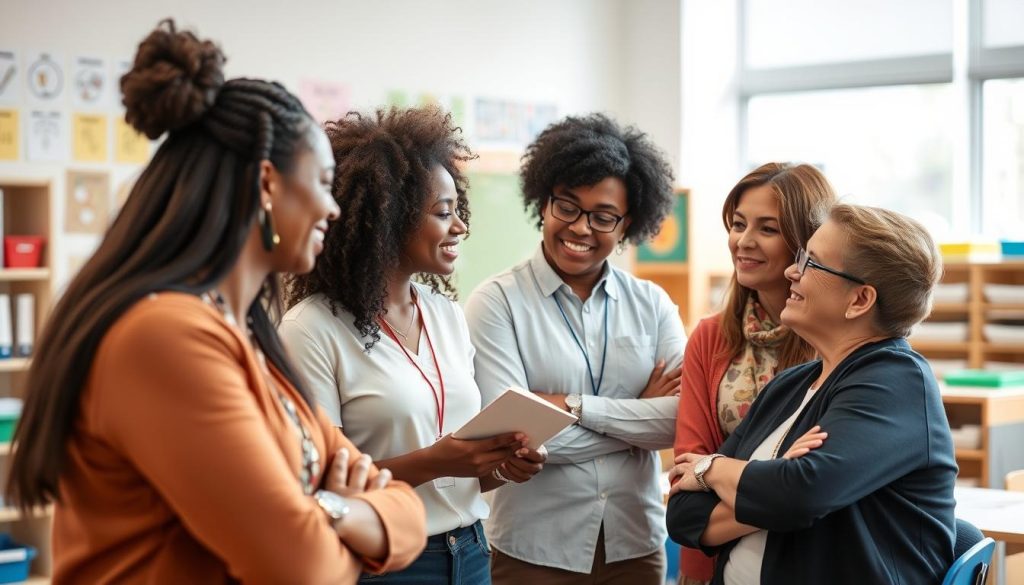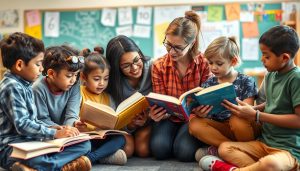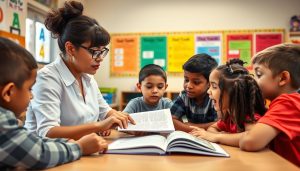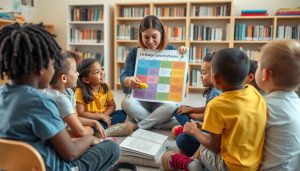The Importance of Building Strong Connections Through Two-Way Communication
When educators and families engage in genuine two-way communication, they create a powerful support system for student learning. Research consistently shows that strong family-school partnerships lead to improved academic outcomes, increased attendance, and better social-emotional development for students.
Effective two-way communication creates the foundation for meaningful parent-teacher partnerships
According to a Harvard Family Research Project study, students whose families are involved in their education are more likely to earn higher grades, adapt better to school, and have better social skills. Developing these teacher skills for communication isn’t just beneficial—it’s essential for creating an optimal learning environment.
Two-way communication differs significantly from one-way information sharing. While newsletters and announcements serve a purpose, true engagement happens when parents have opportunities to respond, share insights, and collaborate with teachers. This reciprocal approach acknowledges that families possess valuable knowledge about their children that can inform educational strategies.
Overcoming Barriers to Building Strong Connections
Before implementing new communication strategies, it’s important to recognize the common barriers that can hinder building strong connections with families:
Time Constraints
Both teachers and parents often juggle multiple responsibilities, making consistent communication challenging. Effective teacher skills include finding efficient ways to connect that respect everyone’s time limitations.
Language and Cultural Differences
Diverse school communities may include families who speak different languages or have varying cultural expectations about education and communication. Developing cultural competence is a critical teacher skill.
Technology Access
Digital divides can limit some families’ ability to engage through online platforms. Versatile communication approaches demonstrate inclusive teacher skills.
Past Negative Experiences
Some parents may have had negative experiences with educational institutions, creating hesitation to engage. Building trust requires specific teacher skills focused on creating psychological safety.
“The most effective forms of parent involvement are those which engage parents in working directly with their children on learning activities at home.”
– Anne T. Henderson, Educational Researcher
Recognizing these barriers is the first step toward developing targeted strategies to overcome them. By approaching family engagement with empathy and flexibility, teachers can create more inclusive communication systems that work for diverse family situations.
Foundational Strategies for Building Strong Connections with Families
Active listening is a fundamental teacher skill for effective two-way communication
Developing strong teacher skills for family communication begins with these foundational approaches:
1. Start with Positive Communication
Begin the relationship by sharing positive observations about students before addressing challenges. This establishes goodwill and shows families you see their child’s strengths. A simple positive note or call home in the first weeks of school can set the tone for ongoing communication.
2. Practice Active Listening
When families share information, demonstrate that you value their input through active listening techniques:
- Maintain appropriate eye contact
- Ask clarifying questions
- Summarize what you’ve heard
- Avoid interrupting
- Take notes on important points
3. Establish Clear Communication Channels
Early in the school year, communicate your preferred contact methods and typical response timeframes. Consider surveying families about their communication preferences to create a system that works for everyone.
Enhance Your Communication Skills
Discover comprehensive strategies for communicating effectively with parents and families through our specialized resources designed for K12 educators.
4. Create a Communication Schedule
Consistency builds trust. Establish regular touchpoints throughout the year, such as:
- Weekly or bi-weekly classroom newsletters
- Monthly individual student updates
- Quarterly family check-ins
- Scheduled conferences with flexible timing options
These foundational teacher skills create the infrastructure for meaningful two-way communication that supports building strong connections with families throughout the school year.
Digital Tools for Building Strong Connections in the Modern Classroom
Technology offers powerful opportunities for enhancing two-way communication when used thoughtfully. Developing digital teacher skills allows educators to connect with families in ways that accommodate diverse schedules and preferences.
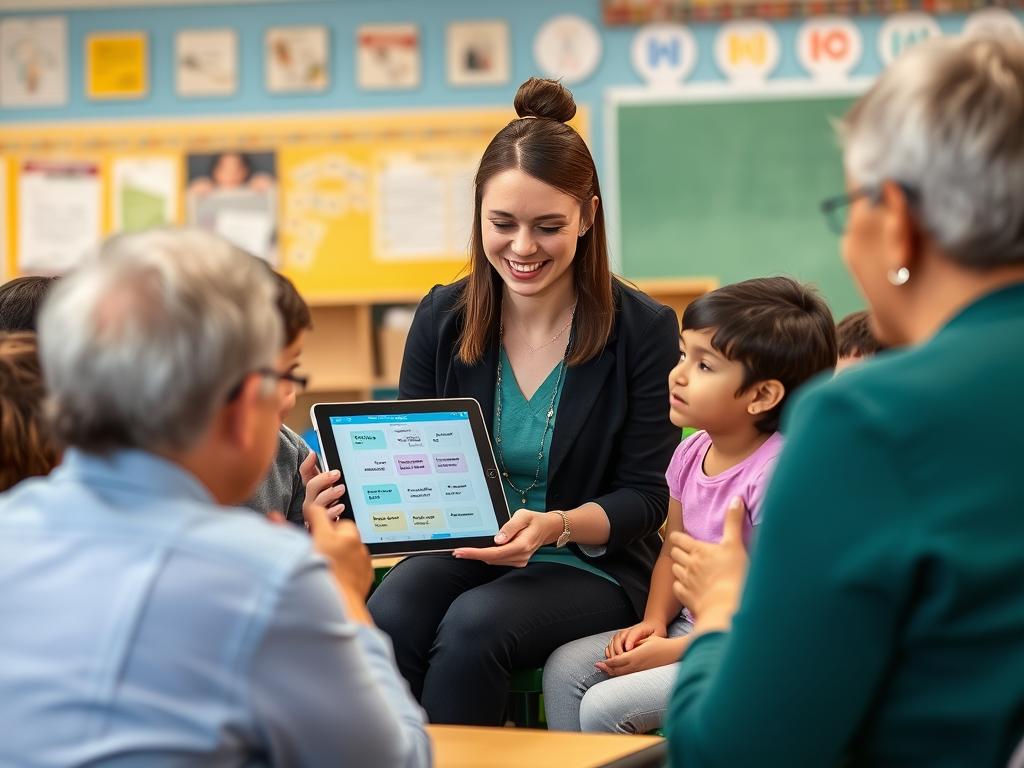
Digital platforms can facilitate regular, accessible communication between teachers and families
Effective Digital Communication Platforms
| Platform Type | Benefits | Best Practices |
| Classroom Apps (ClassDojo, Seesaw) | Real-time updates, photo/video sharing, translation features | Post weekly highlights, respond promptly to messages, share specific student accomplishments |
| Learning Management Systems | Assignment tracking, grade visibility, resource sharing | Provide parent tutorials, maintain current information, highlight upcoming deadlines |
| Email/Text Systems | Direct communication, documentation, accessibility | Respond within 24-48 hours, keep messages concise, balance information with inquiry |
| Video Conferencing | Face-to-face interaction, scheduling flexibility | Offer evening/weekend options, prepare agenda in advance, follow up with summary |
Digital Equity Considerations
While leveraging technology, remember that not all families have equal access to digital tools. Developing inclusive teacher skills means:
- Surveying families about technology access early in the year
- Providing alternative communication options when needed
- Offering resources about school or community technology access
- Creating simple tutorials for navigating digital platforms
By thoughtfully implementing digital communication tools while maintaining awareness of equity issues, teachers can create more accessible pathways for building strong connections with all families.
Cultural Competence: Essential for Building Strong Connections
Developing cultural competence is among the most valuable teacher skills for effective family communication. Schools often serve diverse communities with varying cultural perspectives on education, communication styles, and family involvement.
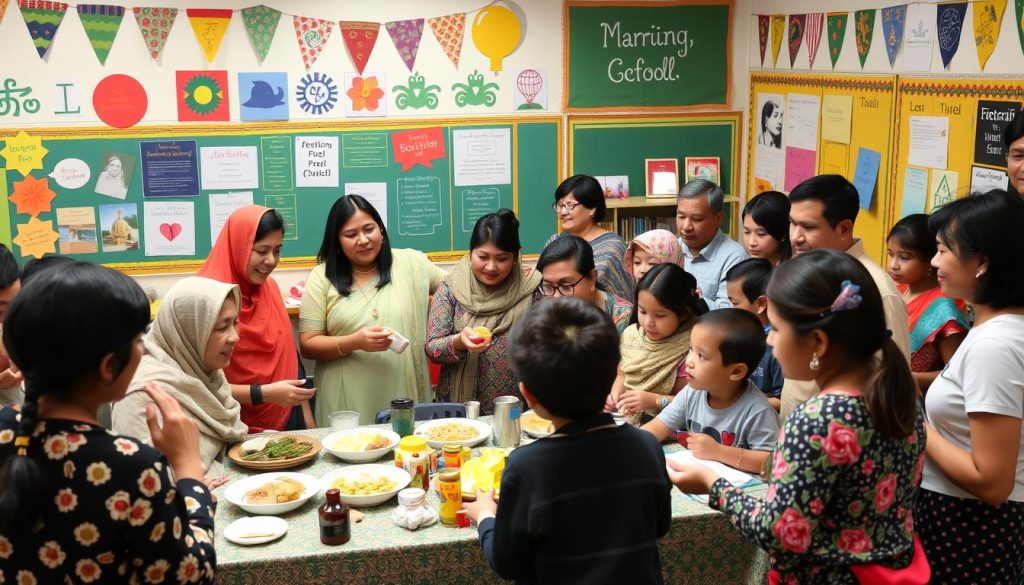
Cultural competence creates inclusive spaces for authentic family engagement
Key Elements of Culturally Responsive Communication
Self-Awareness
Reflect on your own cultural background and how it shapes your communication expectations and assumptions about family involvement.
Knowledge Building
Learn about the cultural backgrounds represented in your classroom through research, community resources, and respectful conversations.
Adaptable Approaches
Modify communication strategies to honor diverse cultural norms while maintaining clear educational objectives.
Practical Applications
- Provide communications in multiple languages when possible
- Learn basic greetings in families’ home languages
- Consider cultural perspectives on topics like academic expectations, discipline, and parent roles
- Invite cultural sharing through classroom activities and family events
- Consult cultural liaisons or community leaders when appropriate
“Cultural competence is not a state but a process, and I think of myself as always evolving, always learning, always growing.”
– Gloria Ladson-Billings, Educational Researcher
By developing these culturally responsive teacher skills, educators create more inclusive environments for building strong connections with all families, regardless of background or cultural identity.
Develop Your Cultural Competence Skills
Access professional development resources designed to enhance your cultural competence and communication strategies with diverse families.
Navigating Difficult Conversations While Building Strong Connections
Even the strongest teacher-family relationships will face challenging conversations. Developing teacher skills for navigating these moments with professionalism and empathy is essential for maintaining trust and building strong connections that withstand difficulties.

Difficult conversations handled well can strengthen parent-teacher relationships
Preparation Framework
Before difficult conversations, prepare using this framework:
What is the core issue?
Identify the specific concern, separating it from emotions or past interactions. Focus on student needs and educational goals.
What evidence should I gather?
Collect relevant student work, behavioral observations, or other documentation to provide concrete examples rather than generalizations.
What might be the family’s perspective?
Consider how the situation might look from the family’s viewpoint, including cultural factors, past experiences, or information they might not have.
What solutions can we explore together?
Brainstorm potential approaches before the meeting, but remain open to collaborative problem-solving during the conversation.
Communication Techniques for Difficult Conversations
- Use “I” statements – “I’ve noticed…” rather than “Your child always…”
- Focus on observable behaviors rather than making character judgments
- Acknowledge emotions while keeping the conversation productive
- Listen more than you speak, especially at the beginning
- Collaborate on next steps with clear action items for all parties
- Follow up to show commitment to the agreed-upon plan
Pro Tip: Schedule difficult conversations at times when you won’t be rushed or interrupted. Allow buffer time before and after to prepare and process.
These advanced teacher skills for handling challenging conversations demonstrate professionalism and commitment to student success, ultimately strengthening rather than weakening family partnerships.
Measuring Success in Building Strong Connections with Families
How do we know if our communication strategies are effectively building strong connections with families? Developing evaluative teacher skills helps us assess our approaches and make continuous improvements.
Regular assessment of communication effectiveness helps refine engagement strategies
Quantitative Indicators
Consider tracking these measurable aspects of family engagement:
- Response rates to communications
- Conference attendance percentages
- Digital platform engagement metrics
- Volunteer participation numbers
- Survey completion rates
Qualitative Indicators
Numbers tell only part of the story. Also look for:
- Quality of family-teacher interactions
- Depth of information sharing from families
- Family comfort in initiating communication
- Collaborative problem-solving instances
- Testimonials and feedback comments
Gathering Feedback
Regularly solicit input from families about communication effectiveness:
Quick Pulse Checks
Brief, frequent opportunities for feedback:
- Single-question polls
- Communication preference updates
- Quick rating scales
Comprehensive Feedback
More detailed input gathered periodically:
- Mid-year communication surveys
- End-of-year reflection forms
- Focus group discussions
Using both quantitative and qualitative measures helps create a more complete picture of your communication effectiveness and identifies specific areas for growth in your teacher skills related to family engagement.
Evaluate Your Family Communication Effectiveness
Access our comprehensive toolkit for assessing and improving your family engagement strategies through effective two-way communication.
Conclusion: The Ongoing Journey of Building Strong Connections
Effective two-way communication with families isn’t a destination but a continuous journey. As you develop and refine your teacher skills in this area, remember that even small improvements can significantly impact student success and well-being.
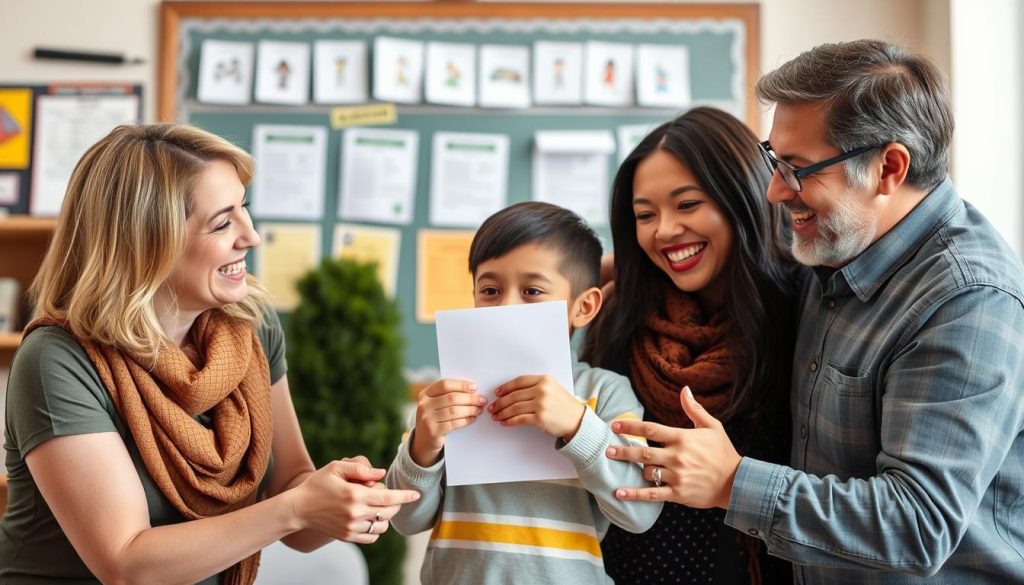
Strong family-school partnerships create powerful support systems for student success
The strategies outlined in this guide provide a framework for building strong connections with families through intentional, respectful, and culturally responsive communication. By implementing these approaches, you create an educational environment where students benefit from consistent support across home and school contexts.
Remember that developing these teacher skills takes time and practice. Be patient with yourself and celebrate progress along the way. Each positive interaction with a family member contributes to a stronger overall partnership.
As you continue building strong connections with the families you serve, you’re not just improving communication—you’re creating the collaborative foundation that helps every student thrive.
Continue Your Professional Growth
Explore our comprehensive resources for enhancing your communication skills and building effective partnerships with families.
What strategies have you found most effective for building strong connections with families in your classroom? Continue refining your approach to create ever stronger partnerships that support student success.

